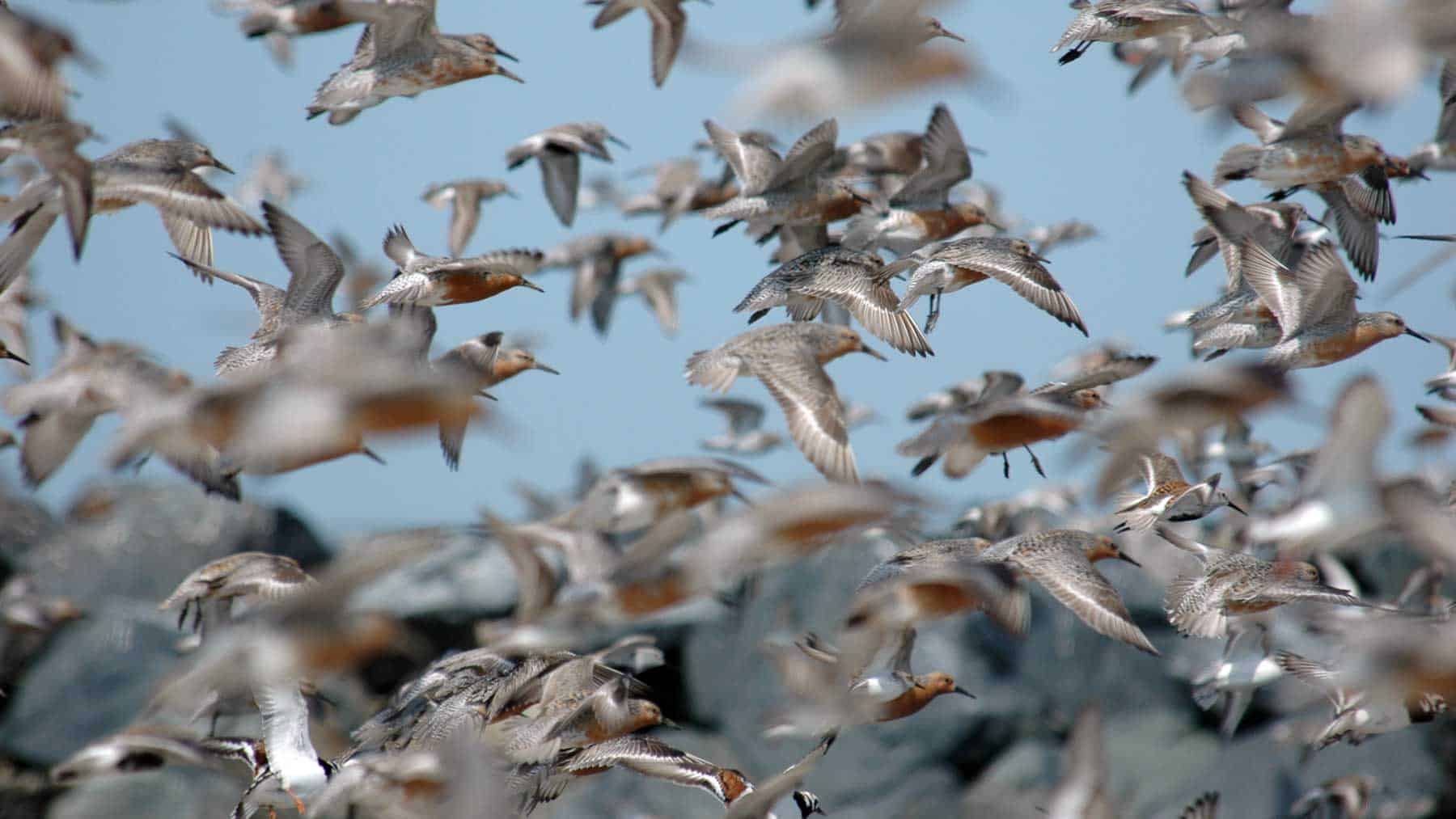Migratory Shorebirds
What the flock are migratory shorebirds?
Shorebirds are the world's most endangered group of bird species.
Commonly referred to as waders, they are most often seen wading around wetlands, mudflats and intertidal areas to feed.
In Australia, there are more than 50 species of shorebirds and most of them are migratory.
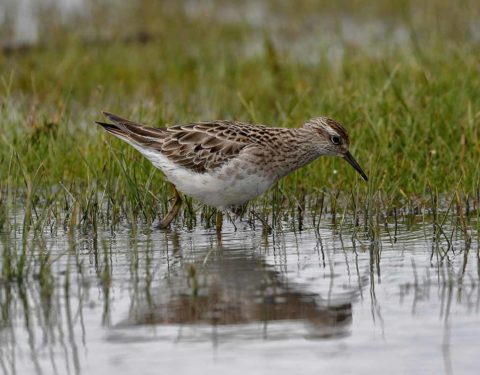
Sharp-tailed Sandpiper
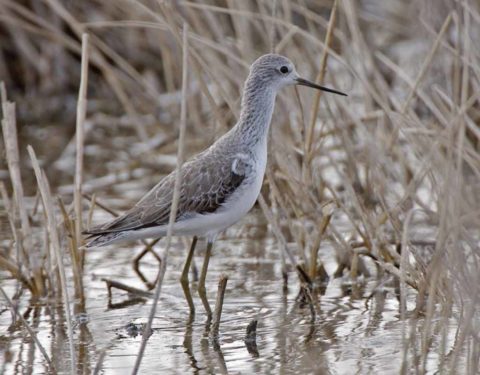
Marsh Sandpiper
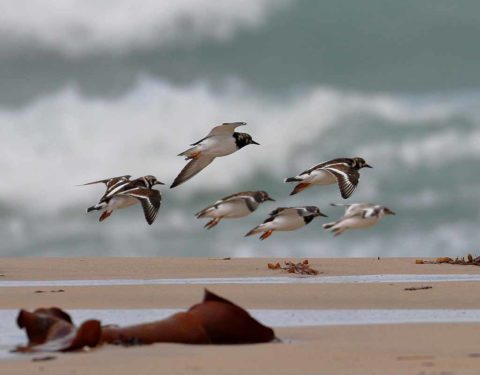
Ruddy Turnstone
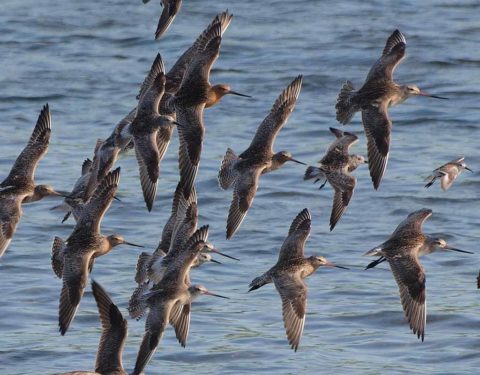
Bar-tailed Godwit
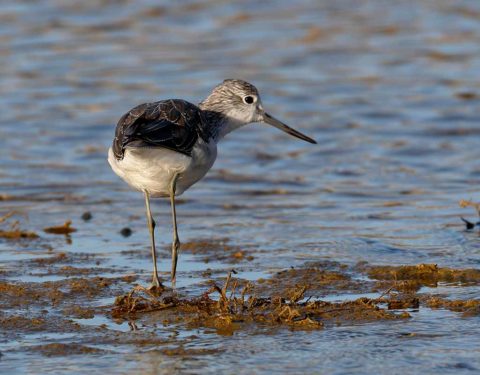
Common Greenshank
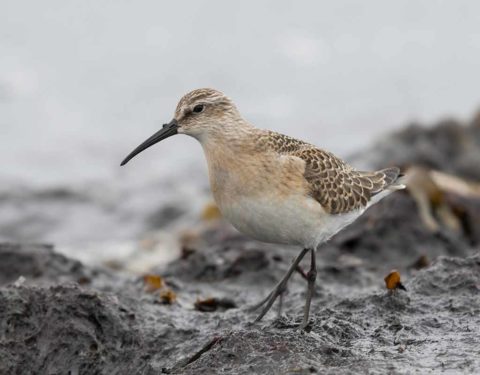
Curlew Sandpiper
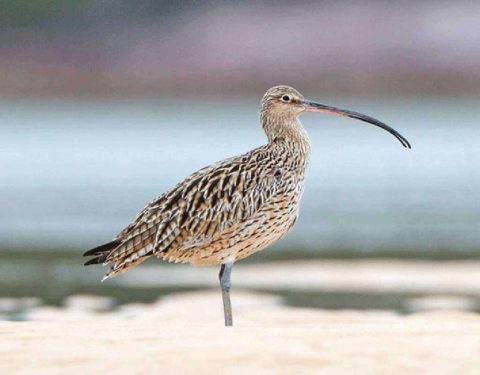
Eastern Curlew
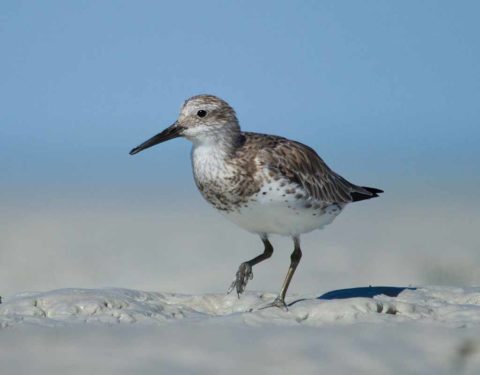
Great Knot
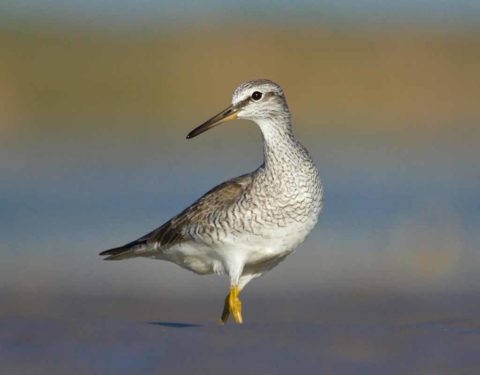
Grey-tailed Tattler
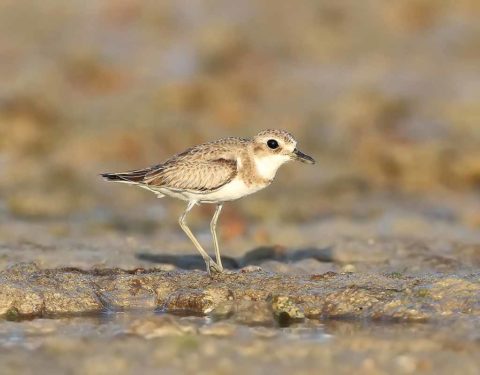
Greater Sand Plover
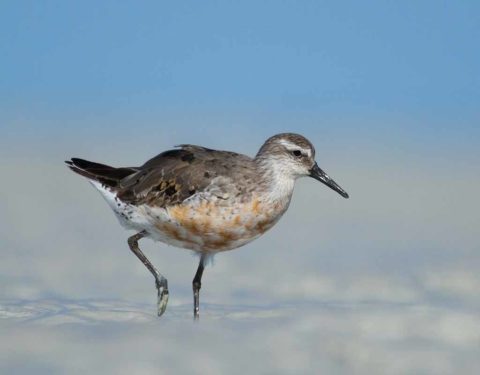
Red Knot
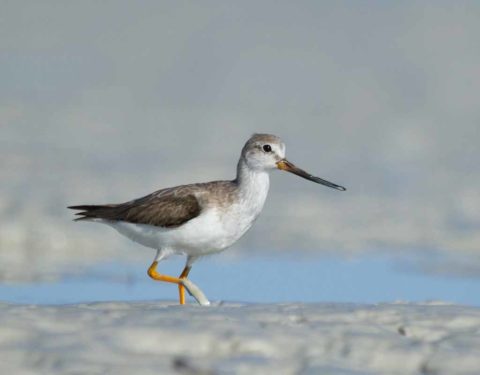
Terek Sandpiper
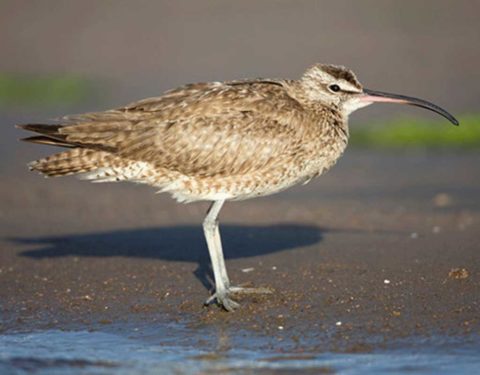
Whimbrel
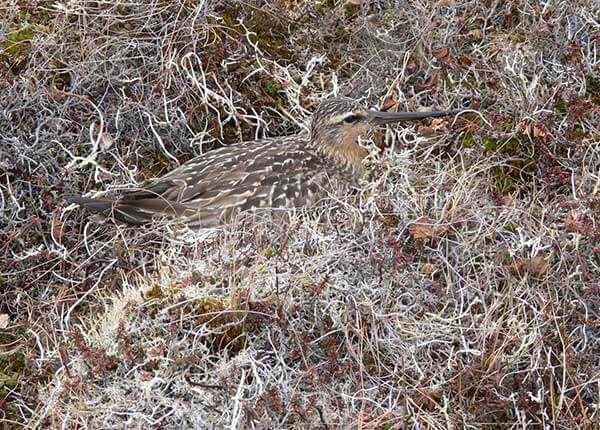
They follow a bird migration highway known as the East Asian-Australasian Flyway. There are 8 global Flyways in the world and the EAAF is the most species-rich and abundant with 6 million waders estimated to use the route annually.
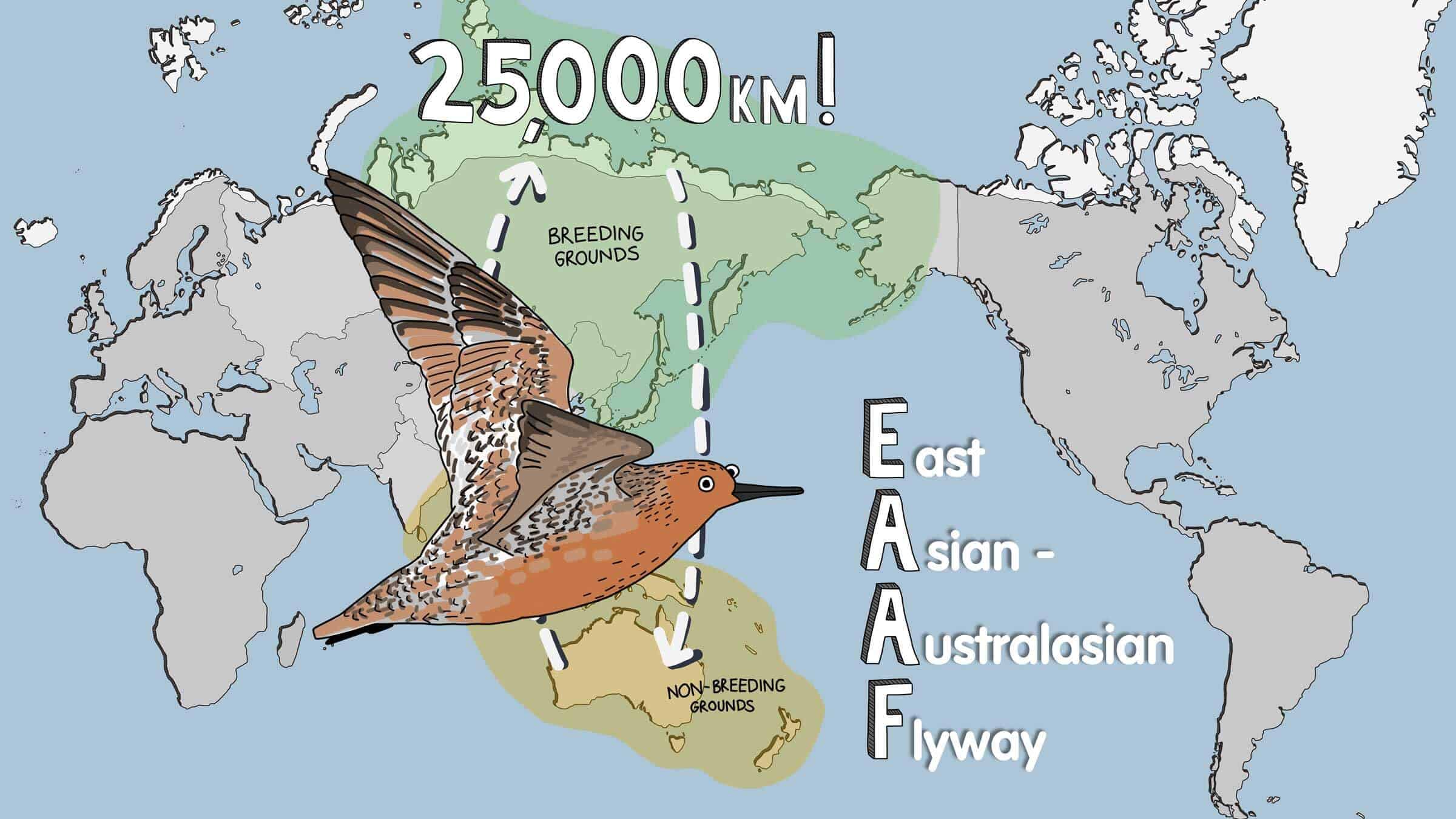
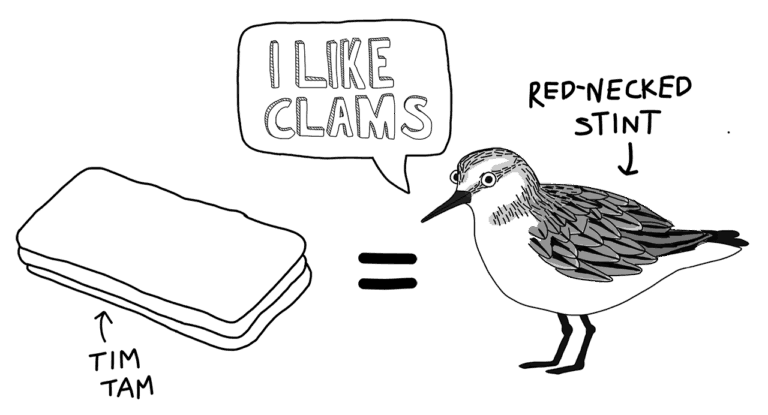
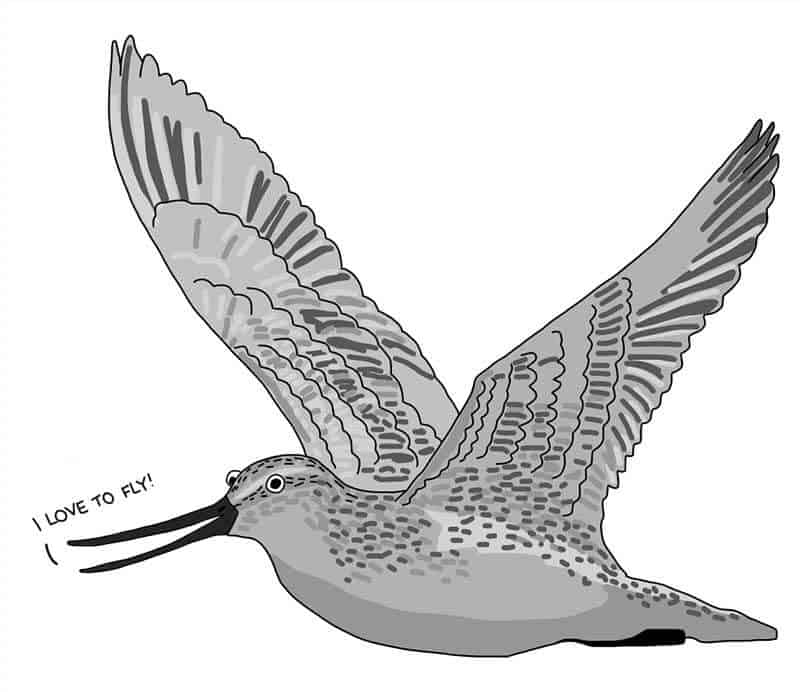
Prior to migration, shorebirds gorge themselves on worms, shellfish and other invertebrates they find in the mud to build up vital stores of fat and protein. In doing so, some shorebird species almost double their body weight!
Shorebirds are long-lived and a by the time a Bar-tailed Godwit is 15 years of age, it will have flown the equivalent distance
from the earth to the moon
on migration alone.
Migratory shorebirds are a living expression of how we're all connected through a global, ecological network.
As they wing their way on migration, their path is a thread that links over
From the shorebird's perspective,
my backyard is equal to your backyard.
Taking care of the wetlands is important, not just for the shorebirds but for everyone on the Flyway because we rely on these places for our health and wellbeing too.

Wetlands provide us with US$47 Trillion in ecosystem services every year.
Over half of the migratory shorebird species that visit Australia are experiencing population declines.
Up to
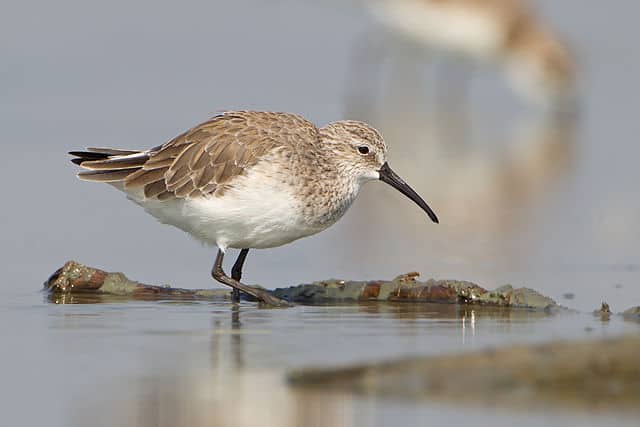
To help shorebird populations recover, we need to overcome some big challenges.

Habitat loss
Reclamation or modification of wetlands for industry, houses and farming reduces the amount of habitat available for shorebirds to roost and feed.

Hunting
Shorebirds are hunted for food in some East Asian-Australasian Flyway countries due to low-income, food security and cultural traditions.

Climate change
Rising sea levels and changing temperatures are resulting in habitat loss, increased rates of nest predation and shifting cycles of food availability for shorebirds.
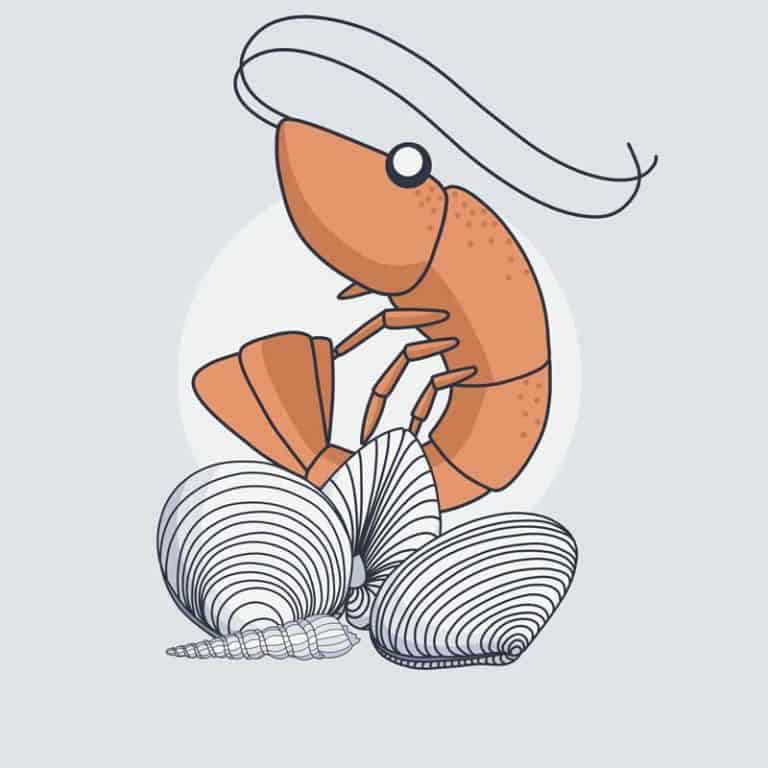
Harvesting
Many of the shellfish species shorebirds eat are also eaten by people. Fishermen in parts of south-east Asia rely on harvesting these species to support their livelihoods.
Finding sustainable solutions for shorebirds and humans to live alongside each other is key.
And it begins with understanding the relationships humans have with migratory shorebirds and the wetland habitats we all rely on.
It is my dream that one day shorebirds like the Red-necked Stint and Bar-tailed Godwit will be as well known as the panda, orangutan and blue whale and deemed as worthy of protection.
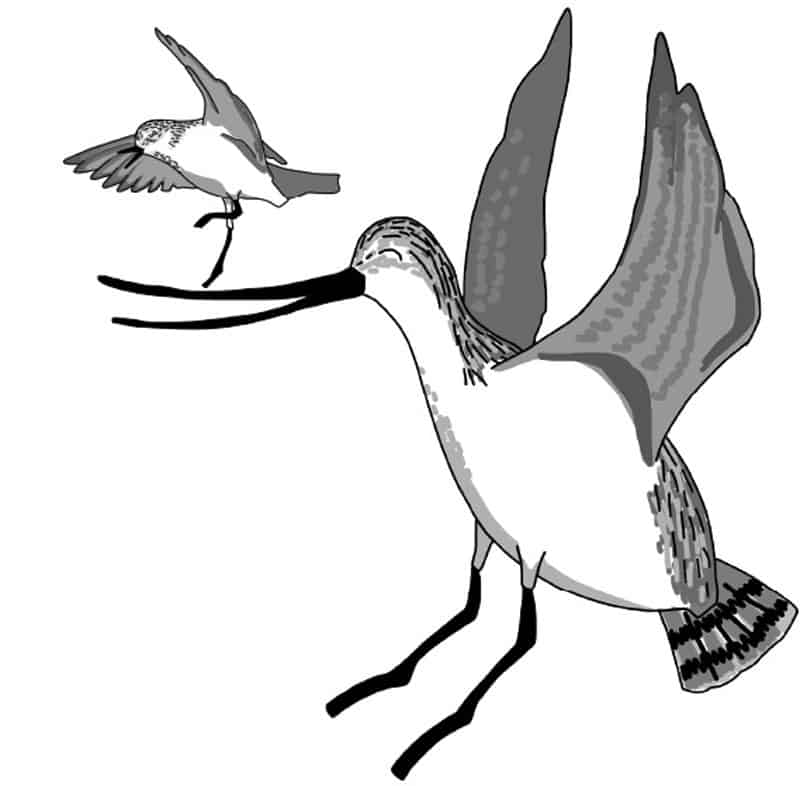
So we need to tell everyone why...
Shorebirds are awesome!
Will you help spread the shorebird word?
Share Wing Threads with a teacher you know!
Image credits:
Header image: Mispillion Harbor, Delaware by Gregory Breese courtesy of US Fish and Wildlife Service. Public domain image.
Sharp-tailed Sandpiper, Lake Wendouree, Ballarat by Ed Dunens via Flickr [CC BY 2.0]
Marsh Sandpiper by Lip Kee via Flickr [CC BY-SA 3.0]
Ruddy Turnstones, Port Fairy, Victoria by Ed Dunens via Flickr [CC BY 2.0]
Bar-tailed Godwit, Yatsu tidal flat, Tokyo Bay by coniferconifer via Flickr [CC BY 2.0]
Common Greenshank, Port Fairy, Victoria by Ed Dunens via Flickr [CC BY 2.0]
Curlew Sandpiper, Calidris ferruginea by Hans Norelius via Flickr [CC BY 2.0]
Eastern Curlew by Dan Weller. Used with permission © 2019.
Great Knot by Nigel Jackett. Used with permission © 2017.
Grey-tailed Tattler by Nigel Jackett. Used with permission © 2017.
Greater Sand Plover by Dan Weller. Used with permission © 2017.
Red Knot by Nigel Jackett. Used with permission © 2017.
Terek Sandpiper by Nigel Jackett. Used with permission © 2017.
Whimbrel by Dan Weller. Used with permisson © 2017.
Male Bar-tailed Godwit incubating eggs by Keith Woodley. Used with permission © 2019.
Video of shorebirds feeding by Grace Maglio. Used with permission © 2019.
Sharp-tailed sandpipers sheltering in the wind by Ed Dunens via Flickr [CC BY 2.0]
Wetland infographics sourced from ramsar.org
Curlew Sandpiper (Calidris ferruginea), Pak Thale, Petchaburi, Thailand by JJ Harrison via Wikimedia Commons [CC BY-SA 3.0]
All shorebird cartoons, icons and maps created by Amellia Formby © 2020. Please request permission for use by using the contact form below.
